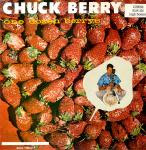 Dad's Take:
Dad's Take:
The Everlys' country-flavored harmony pop is one of the signature sounds of the period. By the time this album came out, many of their biggest hits were behind them, but they put together a solid record. The Everlys helped to fill the void in rock and roll music in the time after Buddy Holly died and Elvis went into the Army, and the onslaught of the Brits. They were a huge influence on later harmony groups like Simon and Garfunkel, the Beach Boys, the Beatles, the Bee Gees, and the Hollies.
The best-known song in this set is the opener, "So Sad (To Watch Good Love Go Bad)." Other songs sound familiar, though, because the Everlys never stray far from what you expect of them. I would have liked to see them welcome the sixties by trying something new on a song or two, but I can't complain about an album that is everything I expect from Phil and Don: some light rock and roll, country, easy ballads, and even a touch of country blues.
Not every song is a hit, but every song is a quality recording. It's a good, strong album.
Brad's Take:
I've listened to The Everly Brothers many times growing up, but never have listened to a full Everly Brothers album. At least not knowingly. But after listening to this one, I want to get all of their stuff and check them out.
I love the super catchy country pop sound they have on "So Sad (To Watch Good Love Go Bad)," I love the slow songs like "Sleepless Nights" and I love the blues influenced style they had on "What Kind Of Girl Are You?" Each song sounds like The Everly Brothers, but the album has a nice variety of styles so it isn't monotonous at all.
It's just a great and solid fun record.
Brad's Take:
I've listened to The Everly Brothers many times growing up, but never have listened to a full Everly Brothers album. At least not knowingly. But after listening to this one, I want to get all of their stuff and check them out.
I love the super catchy country pop sound they have on "So Sad (To Watch Good Love Go Bad)," I love the slow songs like "Sleepless Nights" and I love the blues influenced style they had on "What Kind Of Girl Are You?" Each song sounds like The Everly Brothers, but the album has a nice variety of styles so it isn't monotonous at all.
It's just a great and solid fun record.




















